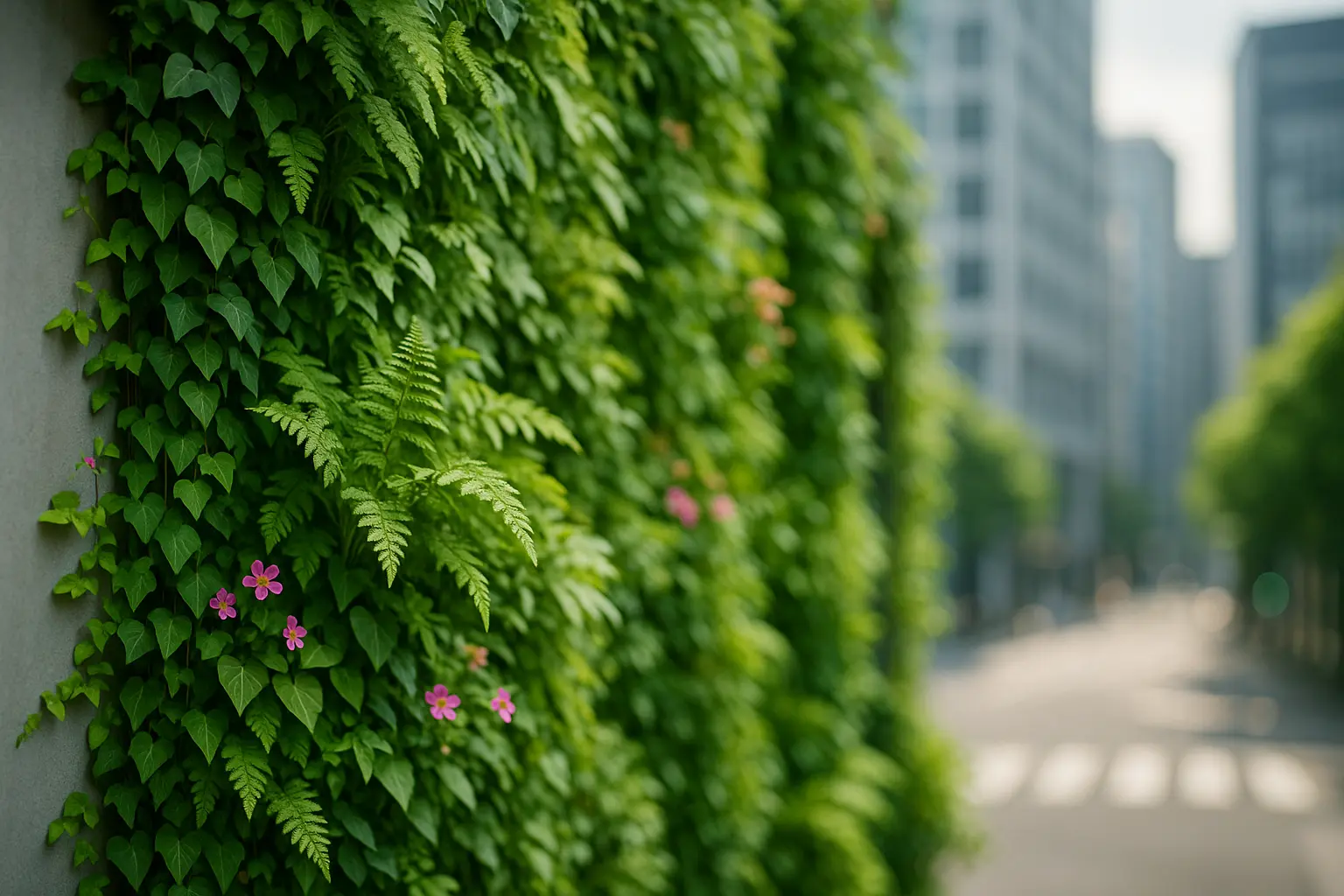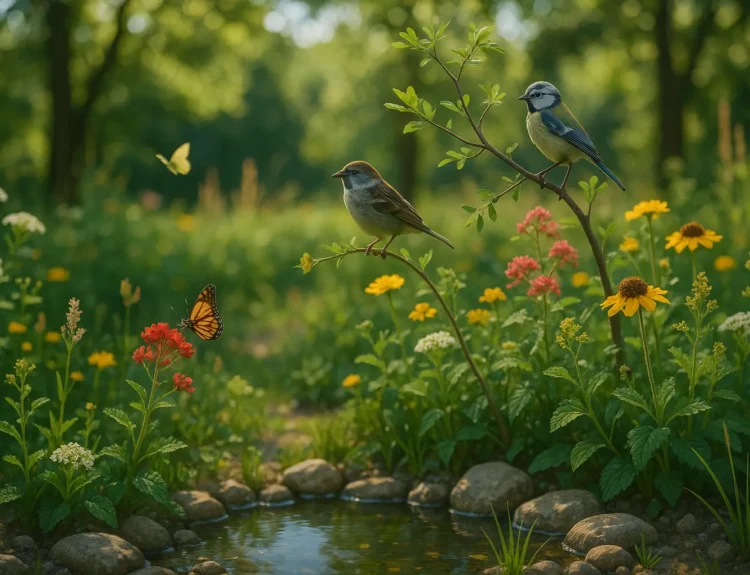Imagine a world where urban jungles are not just a metaphor for bustling city life but a reality of flourishing green spaces reaching skywards. As cities expand and concrete dominates the landscape, vertical gardening emerges as a beacon of hope, merging sustainability with modern design. In this article, we’ll delve into the essence of living walls and explore how they redefine urban spaces, infusing them with nature’s vibrancy.
The Rise of Vertical Gardens
So, what exactly is a vertical garden? At its core, it is the artful arrangement of plants on a vertically built structure, transforming walls into lush, vibrant screens of greenery. This innovative approach to gardening has evolved into a trend not just for its aesthetic appeal, but for its tangible benefits in urban settings.
The urban sprawl dilemma is familiar to all of us. With limited space, the need for green spaces has never been more pressing. Vertical gardens offer a solution, transforming idle facades into thriving habitats.
We see these living walls gracing the sides of buildings, offering not just a visual feast but a respite for the environment. Beyond their beauty, vertical gardens promise ecological benefits: they act as natural air filters, reducing pollutants and aiding cities in their quest for sustainability. They also serve as insulation, helping to regulate building temperatures and reduce energy consumption.
More than just a design statement, vertical gardens are an ecosystem in themselves, supporting biodiversity by providing a habitat for various species of insects and birds. It’s a conscious choice for a sustainable future, one wall at a time.
Understanding the Systems Behind Vertical Gardens
Now, let’s talk about the intricate systems that bring vertical gardens to life. It’s not simply a matter of placing plants on a wall. There’s a detailed infrastructure at play that ensures these gardens thrive.
The backbone of a successful living wall lies in its irrigation system. Proper watering is crucial, as plants in vertical setups face unique challenges compared to traditional gardens. We employ automated systems that deliver the precise amount of water and nutrients to each plant, ensuring uniform growth and vigor. This method conserves water, a crucial factor in our sustainability efforts.
Equally vital is the wall’s support structure. A robust design system ensures the wall can withstand the weight of soil, water, and plants, all while maintaining its vertical orientation. High-quality materials are essential—stainless steel, durable plastics, and fabric pockets are common choices.
Plants are chosen meticulously, considering factors such as light exposure, climate, and the wall’s orientation. This customization allows for a thriving garden tailored to each unique urban space.
These systems are the unsung heroes of vertical gardens, working ceaselessly behind the scenes to ensure we enjoy lush, vibrant greenery that enhances our cities.
The Benefits of Vertical Gardens in Urban Spaces
The integration of vertical gardens into urban landscapes brings a host of benefits that extend beyond their obvious aesthetic appeal. Let’s delve into how these living walls enhance our cities and our lives.
One of the standout benefits of vertical gardens is their ability to improve air quality. In bustling cities, air pollution is a persistent issue. Vertical gardens act as natural air purifiers, absorbing pollutants and releasing fresh oxygen. They serve as a protective barrier against environmental toxins, making our urban spaces more livable.
Noise pollution is another modern plague, and vertical gardens prove to be a remedy. The presence of plants significantly reduces noise levels, creating a quieter, more peaceful environment.
Moreover, vertical gardens contribute to energy efficiency. By acting as natural insulators, they help regulate building temperatures, reducing the need for artificial heating and cooling. This not only cuts down on energy costs but also lessens our carbon footprint.
Let’s not forget the psychological benefits. The presence of greenery has been shown to reduce stress, improve mood, and enhance mental well-being. In the concrete jungle, a touch of nature is a balm for the soul, reminding us of our connection to the natural world.
Lastly, vertical gardens promote biodiversity. They create habitats for birds, insects, and other wildlife, enriching the urban ecosystem and fostering a balance within our bustling environments.
Designing Urban Spaces with Vertical Gardens
Designing urban spaces with vertical gardens requires a blend of creativity, necessity, and foresight. As city dwellers, we are constantly seeking ways to infuse our surroundings with nature, and vertical gardens offer a versatile canvas for this endeavor.
When incorporating a living wall into a design, we consider several factors. The wall’s location is paramount; it needs to receive adequate light and be sheltered from extreme weather conditions. This ensures that the plants chosen can thrive and flourish.
Choosing the right plants is an art in itself. We aim for a mix of evergreens and seasonal foliage, creating a dynamic tapestry that changes with the seasons. Including flowering plants adds bursts of color, while herbs and edible plants can provide a delightful culinary bonus.
The materials used in these gardens are chosen for both their functionality and environmental impact. Sustainable materials are a priority, aligning with our commitment to eco-friendly practices. Additionally, the design should harmonize with the architectural style of the building, enhancing its character and appeal.
Incorporating technology, such as smart irrigation systems, ensures these gardens remain low-maintenance and efficient. By integrating elements like LED lighting, we can showcase these vertical gardens night and day, creating an eye-catching feature that enhances the urban landscape.
Designing with vertical gardens transforms our cities, making them not only more beautiful but healthier and more sustainable places to live.
As we look to the horizon of urban development, vertical gardens stand as a pivotal element in the future of sustainable cities. They are not just an architectural trend but a commitment to a greener, more balanced environment.
Our exploration of living walls reveals their multifaceted benefits, from enhancing air quality to promoting biodiversity and energy efficiency. As we continue to innovate and improve upon these systems, the possibilities for integrating nature into our urban fabric are boundless.
In the years to come, the success of vertical gardens will hinge on our collective commitment to sustainability, creativity, and forward-thinking design. As we grow our cities skywards, may we also grow our dedication to nurturing the green spaces that make urban life not just bearable but beautiful.
So, let’s embrace Vertical Gardening, and together, let’s cultivate a future where our cities are not just concrete jungles but thriving ecosystems that celebrate the harmony between urban life and nature.
FAQ
What are the benefits of vertical gardening in urban environments?
Vertical gardening provides numerous advantages, including maximizing limited space, improving air quality, reducing urban heat, and offering aesthetic appeal. It also promotes biodiversity and can effectively insulate buildings, leading to energy savings.
How can city dwellers start a vertical garden?
Individuals can initiate a vertical garden by selecting a suitable wall, choosing plants that thrive in their specific climate, and using structures such as trellises, shelves, or wall planters. It’s essential to consider factors like sunlight, water access, and plant maintenance.
What types of plants are best suited for living walls?
Living walls thrive with a diverse range of plants, including ferns, succulents, herbs, and flowering varieties. The choice largely depends on the local climate, lighting conditions, and personal preferences for maintenance and aesthetics.
How do living walls contribute to environmental sustainability?
Living walls support sustainability by decreasing energy consumption through natural insulation, reducing urban heat islands, improving air quality by absorbing pollutants, and fostering habitats for various species, thus enhancing urban biodiversity.
What are the maintenance requirements for a vertical garden?
Maintaining a vertical garden involves regular watering, pruning, and monitoring for pests or diseases. It’s also crucial to ensure proper drainage and periodically check the structural integrity of the supporting framework to prevent any long-term damage.



